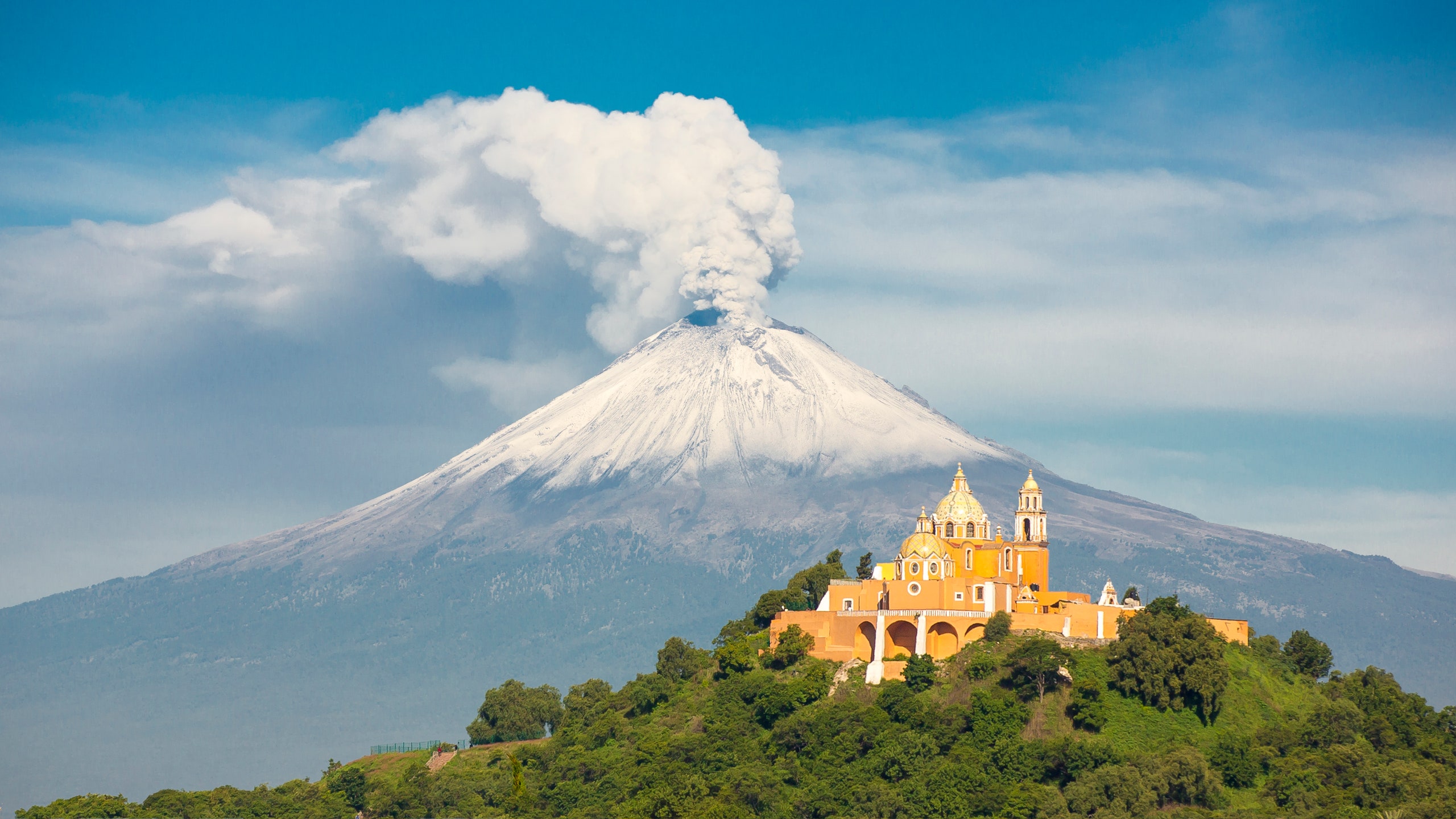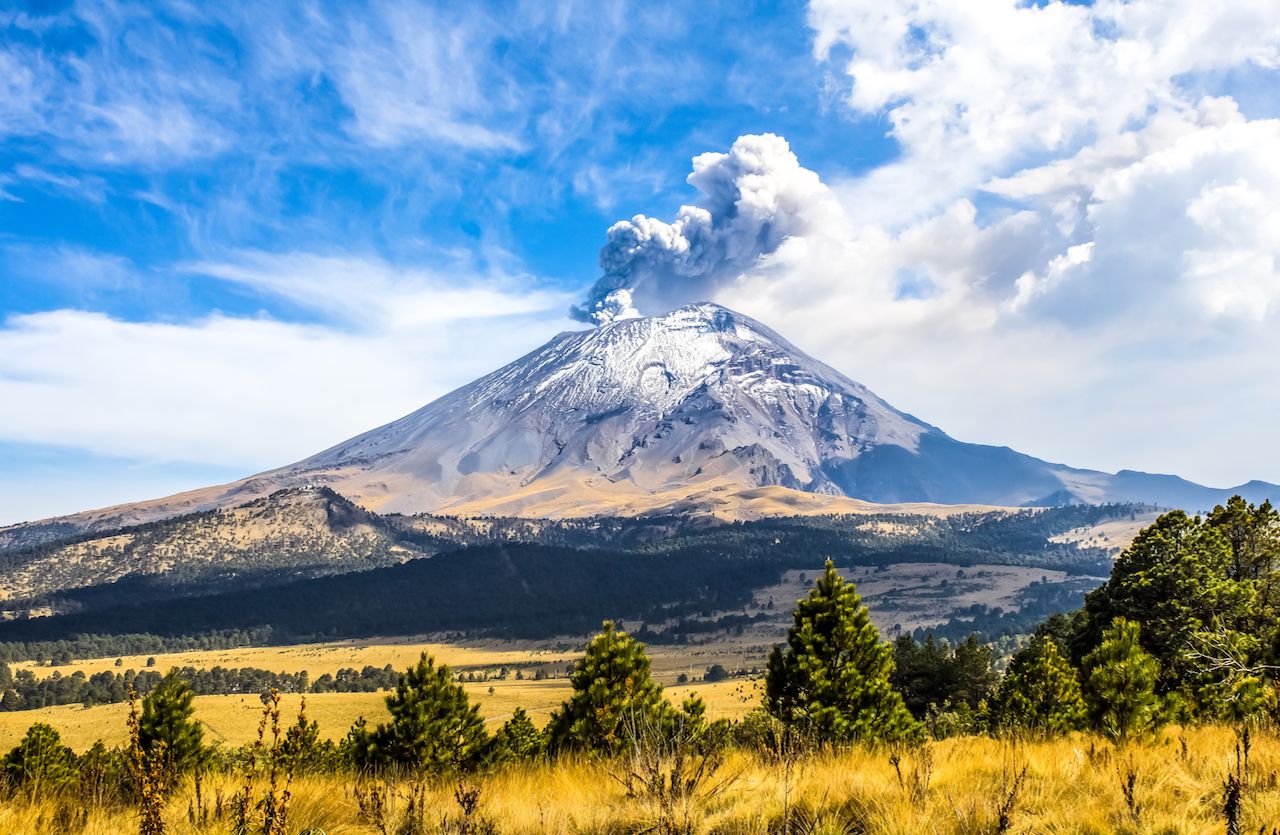Mexico’s notoriously active Popocatépetl volcano, which has been a source of concern in recent weeks due to increased activity, seems to be exhibiting signs of calming down. This could potentially bring a sigh of relief to millions of individuals residing in its vicinity. President Andres Manuel Lopez Obrador recently announced that the volcanic activity had reduced in intensity and was now primarily affecting Puebla, a state in Central Mexico.
However, is this reduction a definitive reprieve or merely a pause before an intensified volcanic episode? The history of the Popocatépetl volcano, the current geological observations, and the government’s strategy to manage this potential hazard warrant a closer examination.
The Volcano and Its Recent Unrest
Popocatépetl, often dubbed as Mexico’s most dangerous active volcano, is located in Central Mexico, situated between the states of Morelos, Puebla, and Mexico. In recent weeks, the volcano has been emitting more ash than usual, causing alarm among local communities.
A “yellow phase 3” warning was issued by the Mexican National Civil Protection Coordination (CNPC) in response to this elevated activity. This is the third of seven stages in the country’s volcano alert system, implying that there is a likelihood of explosive activity and ash fall. As a result, millions of people in the area were advised to prepare for a potential evacuation.

A Welcome Respite or a Deceptive Lull?
Despite this, President Lopez Obrador recently announced that the intensity of the eruptions had decreased and the ash emission was less extensive. This could potentially indicate a return to a more stable phase.
However, volcanoes are notoriously unpredictable. Decreased activity does not necessarily signal an end to an eruption but could merely represent a lull. Experts are careful to note that the situation may change rapidly and unexpectedly, which is why authorities are still urging residents to remain alert and prepared.
Living in the Shadow of a Volcano
Living near an active volcano like Popocatépetl is a reality fraught with uncertainty for many Mexicans. Not only do these residents face the risk of pyroclastic flows and ashfall, but they must also contend with the ongoing impacts on air quality.
Even when the volcano is not actively erupting, it can still emit gases that are harmful to human health. The recent increase in volcanic activity led to heightened concerns about air quality, prompting Environment Secretary Bety Manrique to urge locals to wear masks and reduce their use of cars.
The government’s handling of this situation provides insight into the broader complexities of disaster management in areas of geological unrest. Clear, frequent, and transparent communication from authorities can reduce panic and ensure that residents are prepared for any potential changes.
President Lopez Obrador’s reassurances about the reduced activity at Popocatépetl are a part of this communication strategy. However, they are also reflective of the government’s balancing act: maintaining vigilance and readiness for a potential volcanic crisis while trying to avoid unnecessary alarm.
Looking Ahead
The recent events surrounding Popocatépetl serve as a stark reminder of the unpredictable nature of volcanic activity and the challenges faced by communities living in close proximity to such geological hazards. As the world grapples with increasing climate uncertainties, the experiences of these communities could offer valuable insights for disaster preparedness and response strategies.
However, as experts monitor the situation closely, one question still hangs in the balance: Is this period of reduced volcanic activity a long-term trend or merely a temporary reprieve? Only time will tell. In the meantime, the people living in the shadow of Popocatépetl continue their lives, always with one eye on the towering volcano in their midst.
